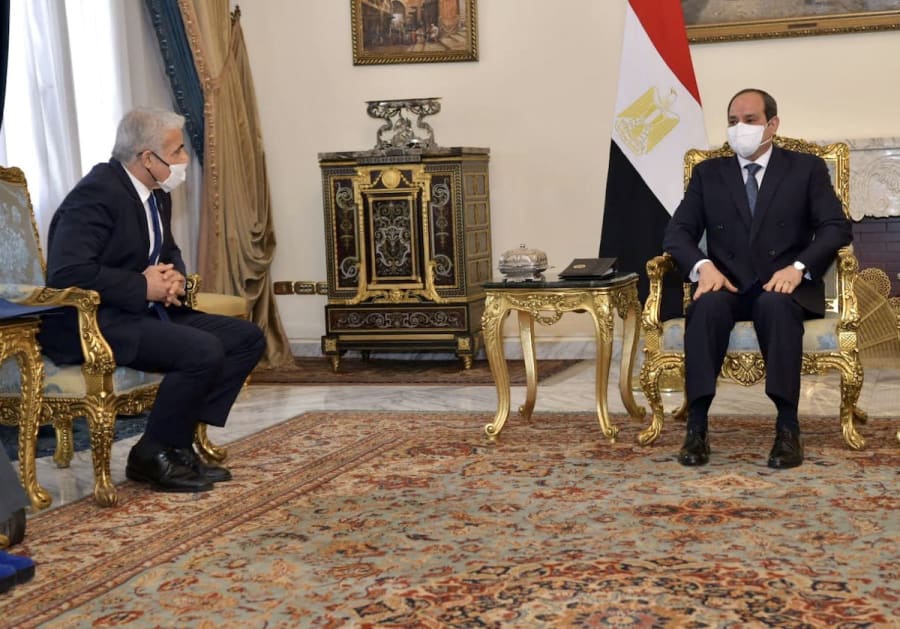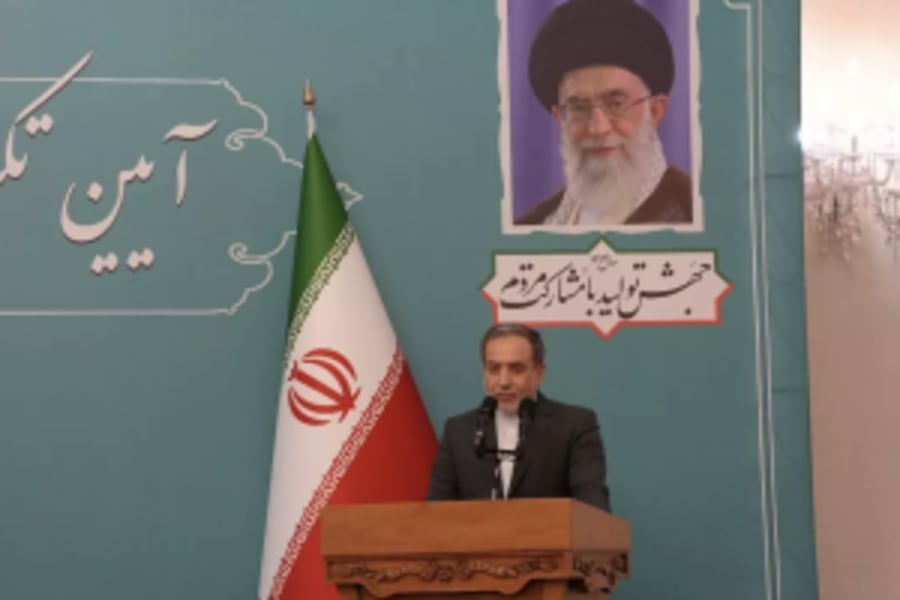Israeli PM promises Egyptian president to review reports of mass grave of Egyptian soldiers
Exhumed report stirs Egyptian, Israeli premiers to examine alleged burial place of Egyptian MIAs

Israeli Prime Minister Yair Lapid assured Egypt’s president that Israel is looking into reports about a mass grave of Egyptian soldiers who fought Israel during the Six-Day War.
Egyptian President Abdel Fattah el-Sisi raised the issue in a phone call with Lapid on Sunday, the first call between the two leaders since Lapid took over the role of Israel’s prime minister from Naftali Bennett.
Lapid said that he instructed Maj. Gen. Avi Gil, military secretary to the prime minister, to examine whether the bodies of Egyptian soldiers that fought in the 1967 Arab-Israeli war remain buried in Israel.
While the history of the soldiers’ burial allegedly has been censored by the Israeli military until recently, Haaretz published a feature about the mass grave on July 8.
According to the feature, dozens of Egyptian commandos killed in the war were buried in fields tended by the inhabitants of Kibbutz Nahshon, at a site that later became home to the tourist attraction Mini Israel. The mass grave was left unmarked, and for years, the land above it was given over to agriculture.
In the 1990s, the IDF banned a report that Yedioth Ahronoth newspaper sought to publish about the burial place of the Egyptian commandos. According to Haaretz, the unpublished article was only recently recovered and was based on interviews with members of the kibbutz, located south of Modi’in.
“I was amazed that the army didn’t fence off the grave and didn’t even put up a small sign,” said one kibbutz member, Dan Meir, who said he was bothered for years by the incident and thought that the bodies should have been returned to Egypt.
Another kibbutz member, Yosef Schreiber, shared Meir’s view.
“I have no doubt that we need to approach the IDF and try to finish this business. I think that everyone needs to do whatever is possible in order to return the Egyptians to their home,” Schreiber said.
“I am certain that if Jews were buried like that, we would cry out to the heavens,” another kibbutz member, Binyamin Naor, is quoted in the unpublished article.
“Maybe [the] IDF should have marked the grave and fenced it off, but that didn’t happen. There was a war, and unpleasant things sometimes happen in war. Don’t forget that the Egyptians came here in order to murder us… [But] despite everything, I don’t rule out the possibility that, on the other side, there are Egyptian families who still believe that their sons’ remains will be returned,” he stated.
Kibbutz member Rami Yizrael said he testified about the burial in a pamphlet published in 1968, which is now in the Kibbutz Nahshon archive. In the pamphlet, he described the shocking details of the burial.
“It seems to me that, two days after the war, I was already sent to work with Asher cultivating the no-man’s land … When I passed by the road on the way to Lot 5, I sensed a horrible smell from the large mass grave of the commandos,” Yizrael stated.
“When I couldn’t go on, because I felt dizzy, I decided to check things out. I discovered two arms and two legs that were severed from the Egyptian commandos, probably after they were hit by explosives and had been blown to bits. I buried them with a hoe. It didn’t help. The stench was still there. I went over to the large mass grave, and to my horror, half a body was sticking out. I covered it quickly.”
According to Haaretz, it was common during the Six-Day War and the War of Independence to bury Arab soldiers and fighters, who were killed inside Israel, wherever they fell in battle.
Burial, according to Haaretz, was done in mass graves without markings – not signifying a massacre or an attempt to hide the killings, but simply as a fact that wars claimed victims that had to be buried.
Only after the 1973 Yom Kippur War did the sides make arrangements to locate MIAs and exchange the bodies of the fallen.

The All Israel News Staff is a team of journalists in Israel.













